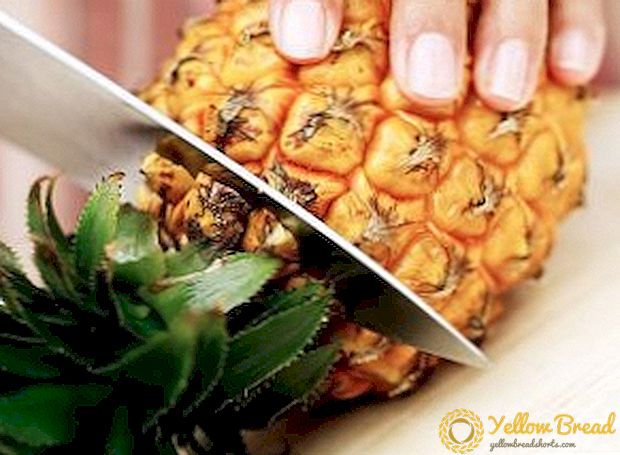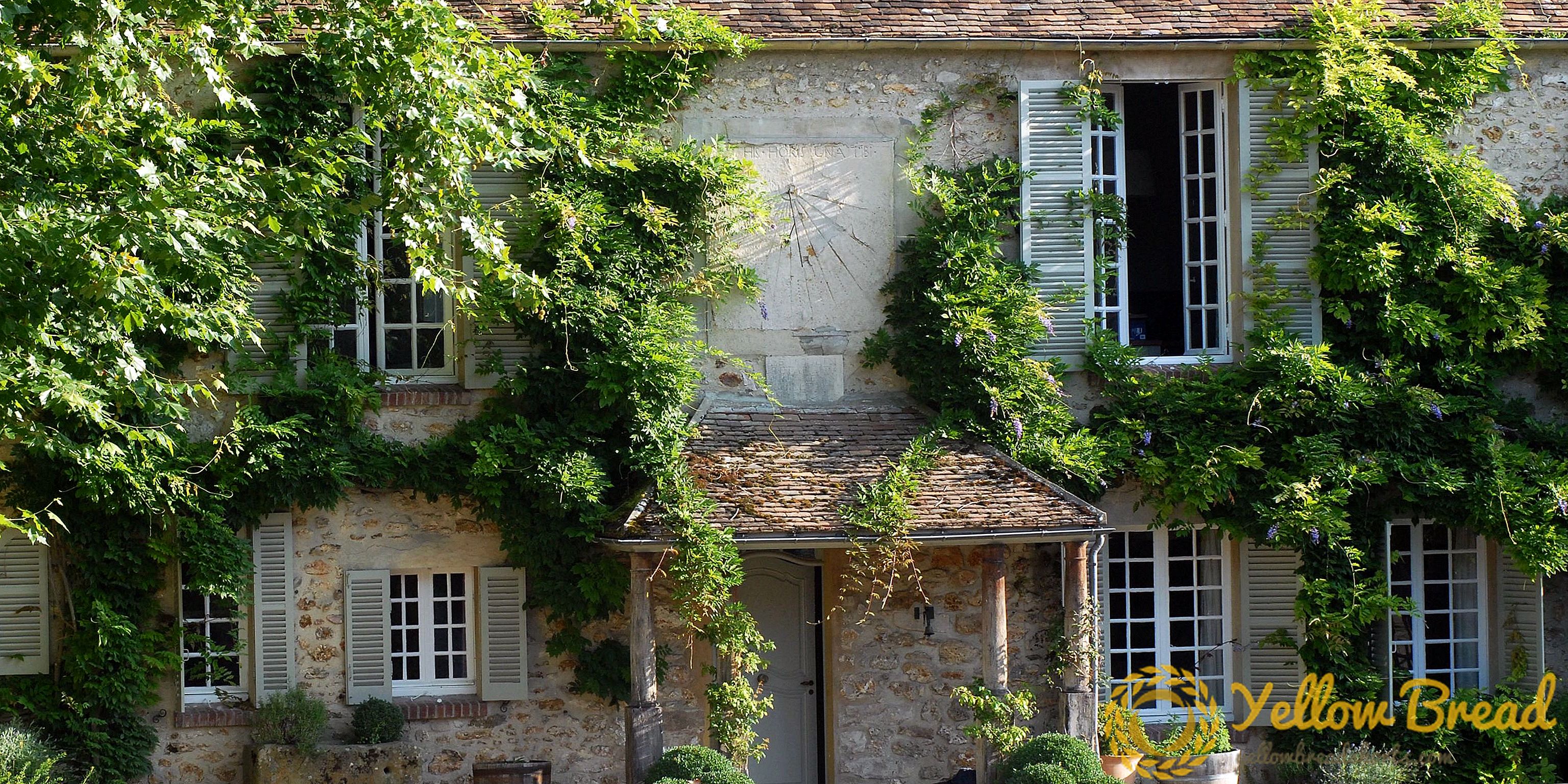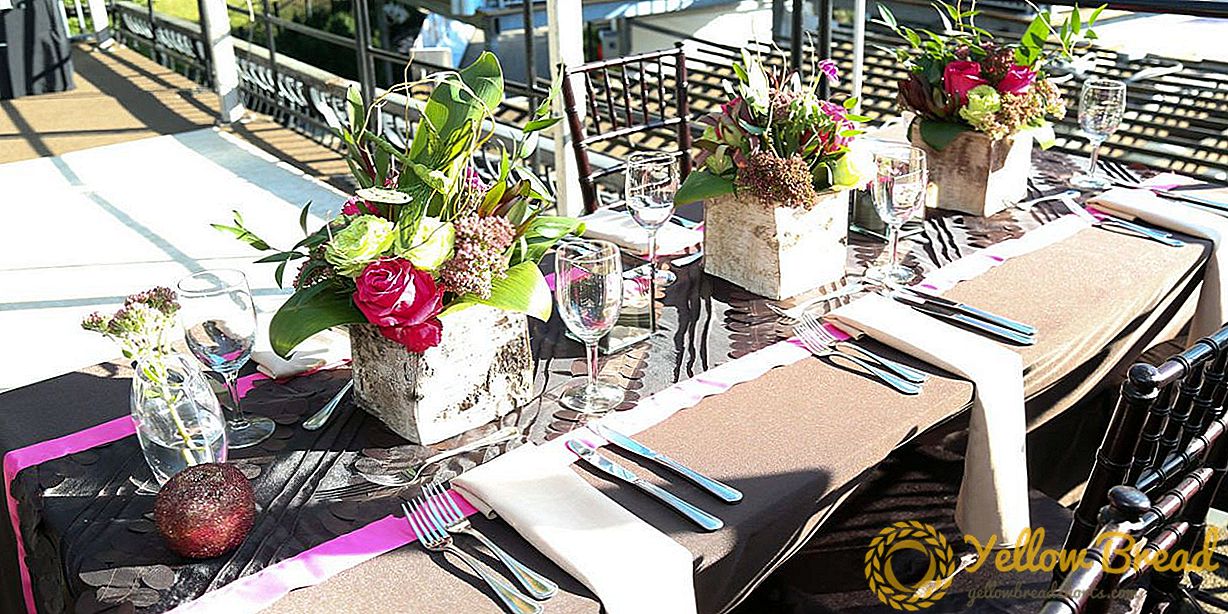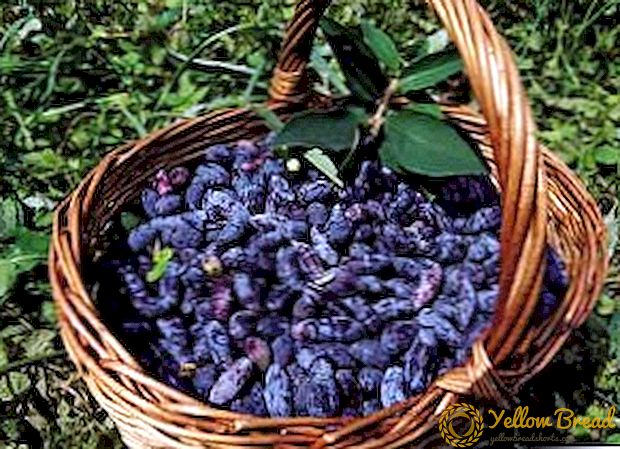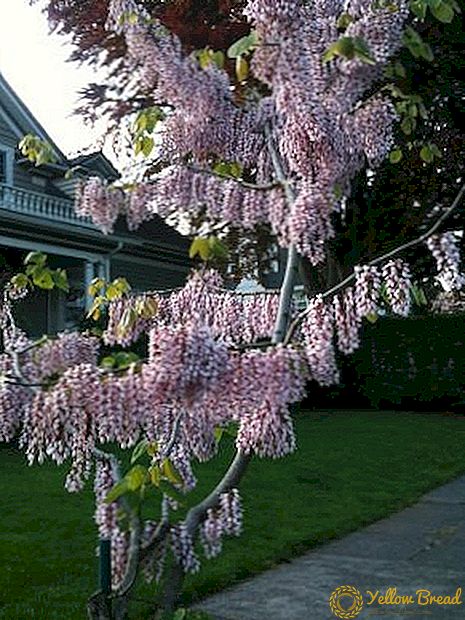 Lush flowering trees and shrubs always attract attention and can hardly leave anyone indifferent to such a charming sight.
Lush flowering trees and shrubs always attract attention and can hardly leave anyone indifferent to such a charming sight.
Sakura, magnolia, lilac - each of these plants during the flowering period is able to lift the spirits and fascinate the eyes of many people. To this list, you can add and cerce - an ornamental tree, abundantly blooming with delicate flowers of pink shades.
In this article, we want to introduce you to him. What does the certzis look like, where did it come from, how did it get its name, description of its varieties - read about these and other facts about the plant below.
- Cercis Griffith
- European cercis
- Western Cercis
- Cercis Canadian
- Cercis cystis
- Chinese cercis
- Cercis kidney-shaped
Cercis (lat. Cercis), or purple - genus of deciduous trees and shrubs belonging to the legume family. It grows in the wild nature of Asia, the Mediterranean, North America.

Purple blooms in spring, usually in the fourth year after planting. Depending on the type of flowers are collected in bunches or brushes, grow from the axils of the leaves or are located on the trunk. Especially unusually, chertsis looks when it blooms before the leaves appear. Then it seems that the branches are literally plastered with pink, purple or red.
During the flowering period, which lasts about a month, the tree exudes a pleasant aroma and attracts bees, therefore it is a honey plant. Fruits are formed in pods 10 cm long, each of which contains from 4 to 7 beans. The tree bears fruit in August.
Purple is a very warm and light-loving plant. Because of this feature of the cercer, its planting and care become problematic for climatic zones with a cold winter period.

Purple is a perennial plant - it can live up to 70 years. In nature, there are from 6 to 10 species of certsis. They differ in stem height, structure and color of flowers, the degree of resistance to cold. Some of them are successfully cultivated. We describe the most famous.
Cercis Griffith
Cercis griffithii (Cercis griffithii) very rare in tree form. As a rule, grows 4-meter shrub with a wide crown. Under natural conditions, it grows on rocky mountain slopes in Central Asia, Iran, and Afghanistan. Therefore, this type of purple is very thermophilic and is not suitable for planting in the middle lane.
Differs rounded bright green leaves with a length of 5-8 cm bud-shaped with a deep notch in the base. Leaves appear after flowering. The flowers are collected in short brushes, have a pink or purple-violet color. Dissolve earlier than other species: in late April - early May. Fruits ripen also early: in July-August. 
European cercis
European Cercis (Cercis siliquastrum), or common (pods) outwardly similar to the Canadian variety, however, it is slightly lower, has larger flowers (up to 2.5 cm in diameter) and smaller leaves. The length of the sheets reach 8 cm. They are semicircular in shape with a heart-shaped base.
This species blooms rose-purple. The flowering period lasts about a month - from April to May, ends as soon as the leaves appear.
The maximum height of the European Cercis is 10 m. It grows like a tree and also has shrub forms. His trunk is thick, usually uneven.
Since in nature this species grows in the countries of the Mediterranean and Asia, it is very thermophilic. Does not tolerate frost below -16 ºС - frosting and stops flowering.
 This purple is characterized by slow growth: at the age of four or five, it can reach a height of only 1-1.5 m.Capricious in transplanting, but not exacting to the composition of the soil. Since the plant is very light-loving, it is preferable to plant it on the southern sides, in areas open to the sun, but protected from the winds.
This purple is characterized by slow growth: at the age of four or five, it can reach a height of only 1-1.5 m.Capricious in transplanting, but not exacting to the composition of the soil. Since the plant is very light-loving, it is preferable to plant it on the southern sides, in areas open to the sun, but protected from the winds.Cercis European retains its decorative effect even in the period of fruiting, in September, thanks to beautifully hanging long (up to 10 cm) pods.
Western Cercis
Western purple (Cercis occidentalis) - winter-hardy North American species. It has a very branched crown. The trunk grows up to 5 m. The leaves of the trees of this species have a juicy green color, bud-shaped, reaching 7.5 cm in diameter. The flowers are bright pink, medium-sized. 
Cercis Canadian
Canadian Cercis (Cercis canadensis), a native of North America, at home reaches a maximum height of 12 m. However, when transferred to another climate zone, the colder one changes its appearance.
Firstly, it loses much in growth - from a tree it turns into a shrub form. Its leaves and flowers become smaller. Flowering is not as magnificent as in the natural range.
"Canadian" blooms from mid-spring to early summer, before the period of appearance of the leaves. The flowers are light pink, up to 1.2 cm in diameter, odorless.Leaves - large (up to 16 cm), dark green, in the form of hearts, in autumn are painted in light yellow tones.
Canadian Zercis has the highest degree of frost resistance among other species. Young plants up to three years old require shelter before hibernation.
Two varieties are used in decorative culture: white and terry. 
Cercis cystis
Natural habitat purple cystic (Cercis racemosa Oliv.) are the central regions of China. As a rule, it is a tree of large size (up to 12 m) with dark green pubescent foliage. It blooms with purple flowers, which are located both on the branches and the trunk, and hang on short pedicels in inflorescences. 
Chinese cercis
Chinese purple trees (Cercis chinensis) grow very large - up to 15 m in height. Their crown is spreading and thick. Plants have large, rounded glossy leaves, reaching a diameter of 6-12 cm.
The flowering period falls on May-June - the trees are abundantly covered with small purple-pink, crimson flowers, gathered in bunches. Leaves appear after the flowers fall.

Cercis kidney-shaped
Crimson kidney (Cercis reniformis) - One of the frost-resistant varieties of Cercis native to northern Mexico. It grows as a large shrub and as a tree. Reaches 10 m in height. It has a wide oval crown.
The leaves of this species are reniform, rounded with a blunt notch at the base - hence the name. Grows in length to 5-8 cm. Flowers are collected in bright pink inflorescences with a length of 1-1.5 cm. 


